
Jack Brabham fue in piloto australiano de Fórmula Uno que se destacó en la décadas 1960-1970 compitiendo con figuras de la talla Jim Clark, Jackie Stewart, Bruce McLaren y Denny Hulme.
Y como otros pilotos de la F1 de aquel entonces tenía su propio equipo. Lo hizo Mc Laren. También lo kizo Stewart. Y por supuesto Brabham.
Un equipo que había formado con el diseñador Ron Tauranac en el año 1960, cinco años después que comenzara a correr.
Precisamente en 1960 el año siguiente al de su primer campeonato mundial en F1 en 1959.
Tenía 40 años de edad, algo insusual si la comparamos con los tiempos modernos de la máxima categoría del automvilismo deportivo, récord que ostenta Sebastian Vettel desde el 2010 cuando ganó el Mundial de F1 con solo 23 años.
Brabhan repetiría el halago de coronarse campeón en 1960.
El Brabham BT3 (estas eran las siglas del nuevo coche donde las inciales representaban las primera letra del apellido de ambos dueños) debuta en el Gran Premio de Alemania. Y las satisfacciones comienzan a llegar en seguida.
El cuarto puesto obtenido en la segunda carrera disputada con el BT3 lo convierte en el primer piloto que obtiene puntos con un monoplaza fabricado por él mismo.
Ganó tres campeonatos mundiales. En los años 1959, 1960 y 1966 y salió subcampeón en 1967.
Una nueva era.
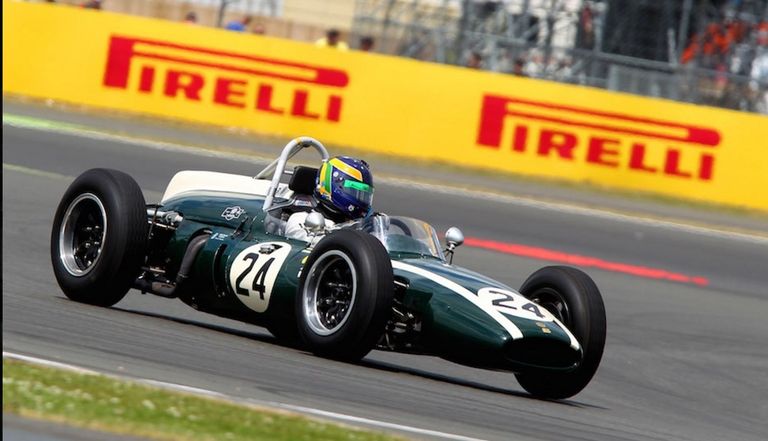
Brabham y Tauranac se dieron cuenta que el motor delantero con autos pequeños tenía los días contados en la F1.
Lotus y Ferrari se anticipan proponiendo en 1961 el auto con motor central mucho más potente que el Cooper de Brabham
Y llega la hora de cambiar. Los grandes equipos están invirtiendo mucho dinero en sus autos ayudados financieramente por empresas multinacionales. Está llegando a grandes pasos el business de la F1.
Después de la pobre temporada 1961 Brabham se une con Racing Organisation y pasa a pilotear los coches fabricados por Motor Racing Developments, una empresa cuyo mayor objetivo no era el de fabricar coches de F1 sino vender los monoplazas a los que competín en las categorías más bajas.
Esto demoró el proyecto inicial mientras los otros equipos ya estaban preparados. Esta situación se prolongó por un par de años hasta que la FIA autorizóa doblar la capacidad máxima del motor de Fórmula 1 a 3 litros para la temporada 1966.
El renacimiento de Brabham.
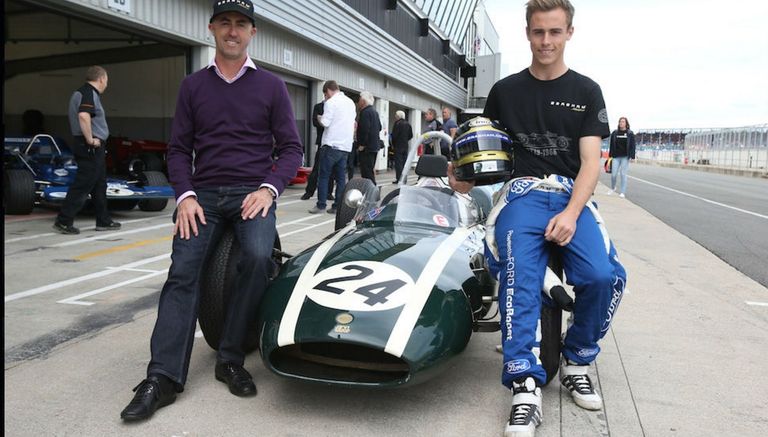
En realidad 1966 fue no solo en año de su "renacimiento" deportivo que le permitió alzarse con un nuevo título. Sino que era la primera vez que un piloto salía tres veces campeón mundial con un auto de su fabricación.
De ahí en más comienza y lento y paulatino declino siendo superado por pilotos como el austríaco Jochen Rindt en el año 1968 y por el belga Jacky Ickx en 1969.
El año 1970 marcó su última temporada en la Frmula 1. El mismo año en el que perdió la vida Jochen Rindt durante las prácticas del Gran Premio de Italia, tras una maniobra efectuada para encarar la famosa curva "Parabólica", a tres carreras del final de la temporada, y que lo convirtió en el -hasta hoy- único piloto de la F1 a ganar el título "post mortem".
El retiro.
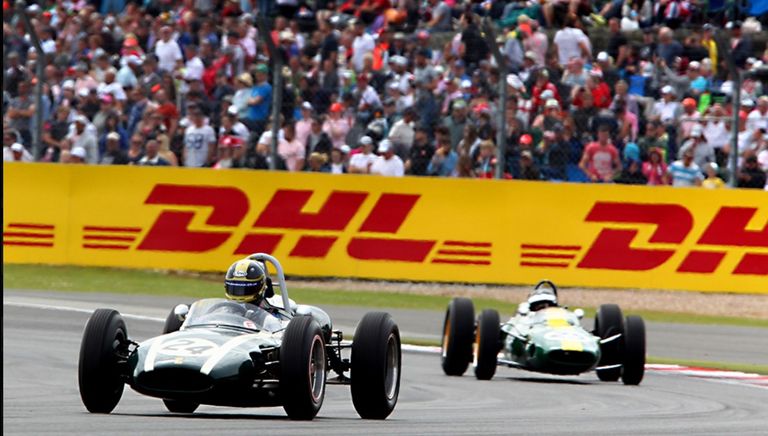
Después de retirarse rompió definitivamente con el automovilismo deportivo vendiendo sus acciones al socio Tauranac y regresó a Australia dode vivió hasta su muerte en el año 2014 a los 88 años de edad.
Poco después de retiro el equipo fue comprado por Bernie Ecclestone que más tarde se convertiría en el "hombre fuerte" de la F1 transformándose en el responsable de administrar los aspectos comerciales de la categoría durante dos décadas (1970-1990)
En 1992 poco después de ser adquirido por el Middlebridge Group una empresa de motores japonesa el equipo Brabham entra en bancarrota al no poder hacer frente a los préstamos contraídos.
Pero esa es otra historia.
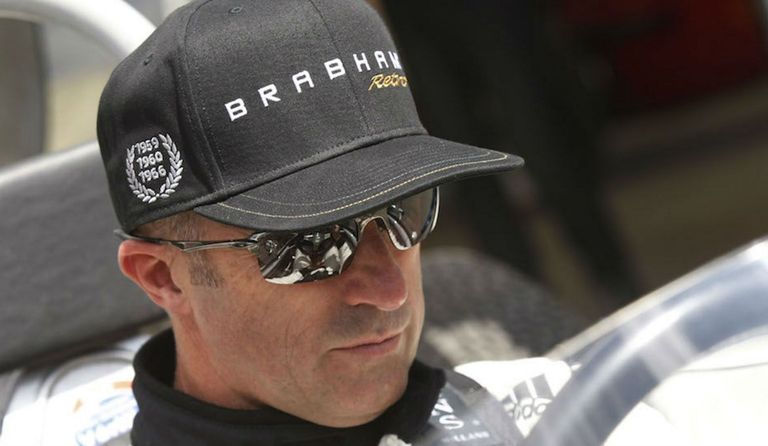
Jack Brabham was an Australian Formula One driver who excelled in the 1960s-1970s competing with the likes of Jim Clark, Jackie Stewart, Bruce McLaren and Denny Hulme.
And like other F1 drivers of the time he had his own team. Mc Laren did. So did Stewart. And of course Brabham.
A team he had formed with designer Ron Tauranac in 1960, five years after he started racing.
Precisely in 1960, the year after his first F1 world championship in 1959. He was 40 years old, something unusual if we compare it with the modern times of the highest category of motorsport, a record held by Sebastian Vettel since 2010 when he won the F1 World Championship at just 23 years old.
Brabham would repeat the honor of being crowned champion in 1960.
The Brabham BT3 (these were the initials of the new car where the initials represented the first letter of the surname of both owners) debuted in the German Grand Prix. And the satisfactions began to arrive immediately.
The fourth place obtained in the second race with the BT3 made him the first driver to score points with a single-seater he had built himself.
He won three world championships. In 1959, 1960 and 1966 and finished runner-up in 1967.
A new era.

Brabham and Tauranac realized that the days of the front engine with small cars were numbered in F1.
Lotus and Ferrari anticipated by proposing in 1961 the mid-engine car much more powerful than Brabham's Cooper.
And the time for change arrives. The big teams are investing a lot of money in their cars with the financial support of multinational companies.
F1 business is coming in leaps and bounds.
After the poor 1961 season Brabham joins with Racing Organisation and starts to drive the cars manufactured by Motor Racing Developments, a company whose main objective was not to manufacture F1 cars but to sell the single-seaters to those competing in the lower categories.
This delayed the initial project while the other teams were already prepared.
This situation went on for a couple of years until the FIA authorized to double the maximum capacity of the Formula 1 engine to 3 liters for the 1966 season.
The rebirth of Brabham.
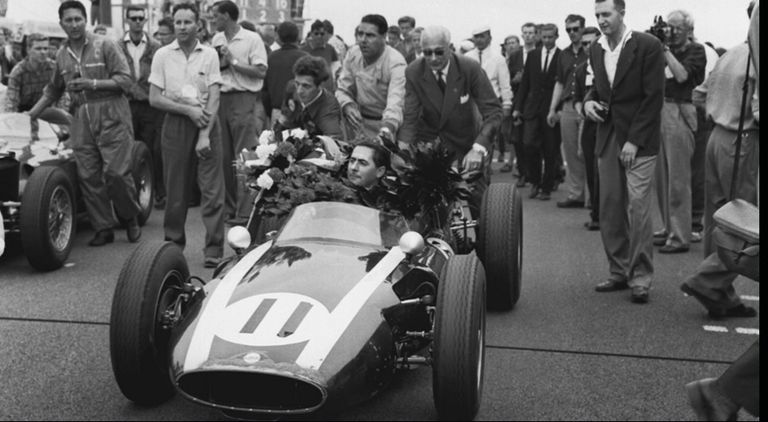
In fact 1966 was not only the year of his sporting "renaissance" that allowed him to win a new title. It was also the first time that a driver became world champion three times with a car of his own manufacture.
From then on, he began a slow and gradual decline, being surpassed by drivers such as the Austrian Jochen Rindt in 1968 and by the Belgian Jacky Ickx in 1969.
The year 1970 marked his last season in Formula 1.
The same year in which Jochen Rindt lost his life during the Italian Grand Prix practices, after a maneuver made to face the famous "Parabolica" curve, three races before the end of the season, and which made him the -until today- only F1 driver to win the title "post mortem".
Retirement.
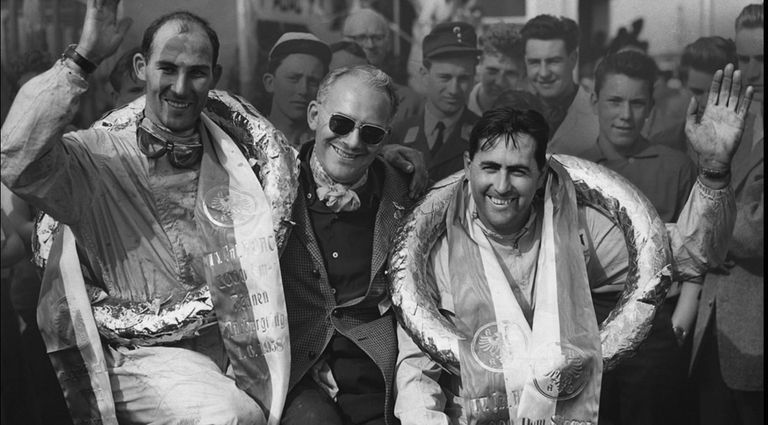
After his retirement he definitively broke with motorsport by selling his shares to the partner Tauranac and returned to Australia where he lived until his death in 2014 at the age of 88.
Shortly after his retirement, the team was bought by Bernie Ecclestone, who later became the "strong man" of F1, becoming responsible for managing the commercial aspects of the category for two decades (1970-1990).
In 1992, shortly after being acquired by the Middlebridge Group, a Japanese engine company, the Brabham team went bankrupt as it was unable to pay its loans.
But that is another story.
Las fotos y capturas de pantallas son del sitio oficial Brabham.co.uk / Photos and screenshots are from the official site Brabham.co.uk
Traducido con: / Translated with: DeepL Translator (free version)
Dear @hugo1954, your content was selected manually by curators @nalexadre, @oneray to receive a curation from BeBlurt 🎉
Thank you for supporting my content @beblurt.
Unfortunately BeBlurt on my Linux PC (Xubuntu) does not work well. I can't publish posts or join communities.
It's a pity because it has the functionality to save drafts, something very useful that other frontends don't have.
Regards
It seems that there are indeed problems with BeBlurt on Linux, and you're not the first to bring this to my attention. Could you tell me which web browser you're using?
I use Chromium and Firefox and both show the same problem.
I hope your efforts are crowned with success.
Thanks for the info 👍
Thank you for voting @nalexadre.